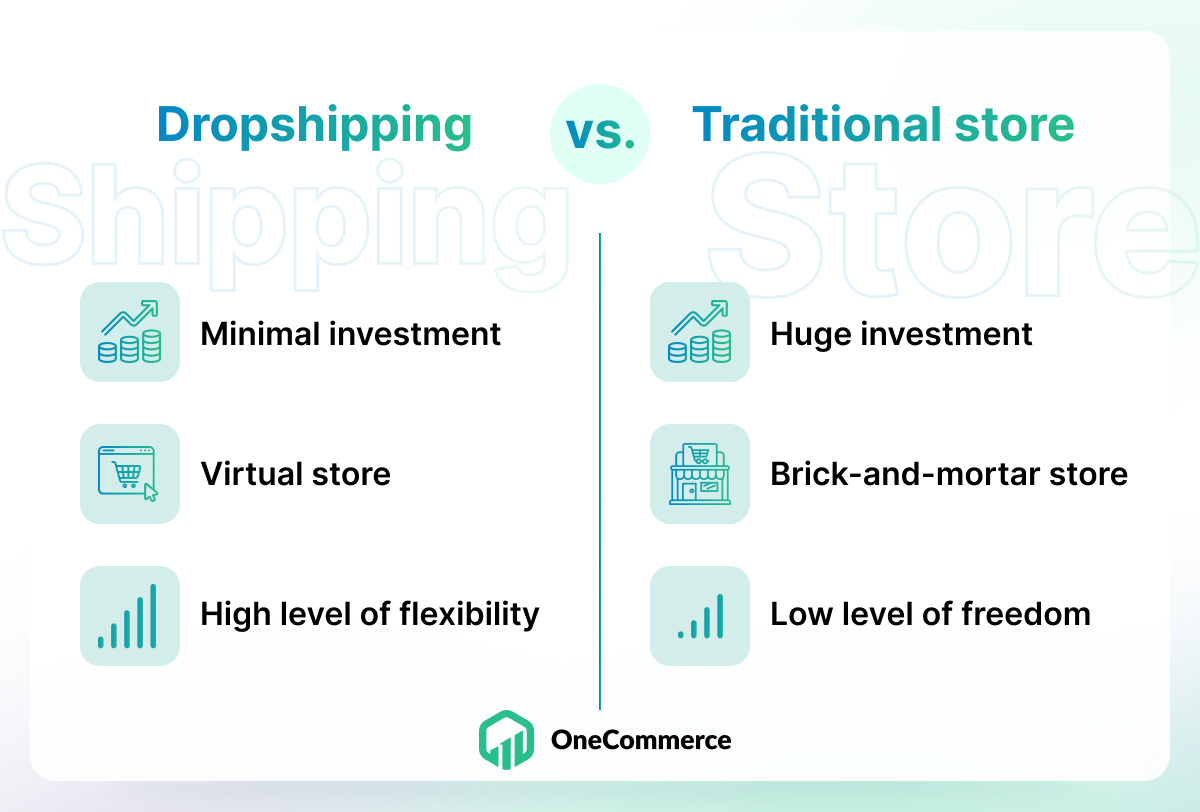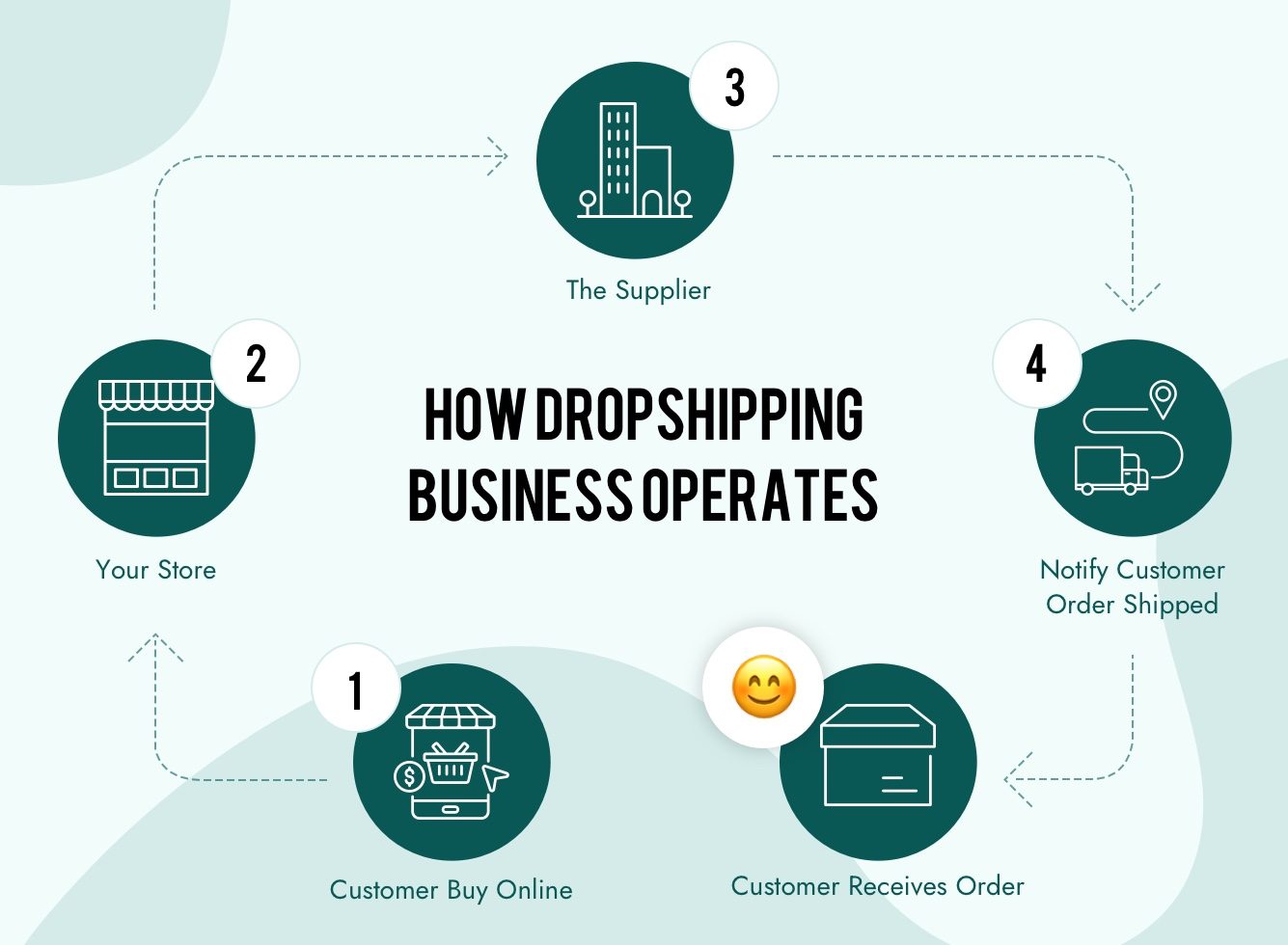Are you curious about diving into the world of e-commerce but unsure where to start? You’re not alone.
Many aspiring entrepreneurs often find themselves tangled in the web of terms like Shopify and dropshipping. These buzzwords are everywhere, promising the potential for a successful online business. But what do they really mean, and how do they differ? Understanding these concepts could be the key to unlocking your e-commerce dreams.
Imagine launching a store without the hassle of managing inventory or worrying about logistics. Sounds appealing, right? We’ll break down the differences between Shopify and dropshipping, helping you decide which path might be the perfect fit for your business goals. Keep reading to unravel the mystery and take a confident step towards your e-commerce success.
Understanding Shopify
Understanding Shopify is crucial for anyone venturing into e-commerce. Shopify offers a robust platform for businesses to create online stores. It provides tools to manage products, payments, and shipping. Let’s explore its features, pricing, customization options, and payment gateways.
E-commerce Platform Features
Shopify offers various features to help businesses succeed online. Users can list unlimited products and manage inventory seamlessly. It supports multiple sales channels, including social media and marketplaces. Shopify also offers SEO tools to improve search engine visibility.
Subscription Plans And Pricing
Shopify offers several pricing plans to suit different needs. The Basic plan covers essential features for new businesses. Advanced plans provide more features for growing businesses. Each plan includes web hosting and customer support. Pricing varies based on features and transaction fees.
Customization Options
Shopify provides numerous themes for store design. Each theme can be customized to match your brand. No coding skills are needed for basic customization. For advanced changes, Shopify’s Liquid language is available. Apps and plugins further enhance store functionality.
Payment Gateways And Transactions
Shopify supports multiple payment gateways for transactions. Shopify Payments simplifies the checkout process. It accepts major credit cards and digital wallets. Third-party gateways are also supported for flexibility. Transaction fees apply, but vary by plan and payment method.
Exploring Dropshipping
Exploring dropshipping can open new doors for budding entrepreneurs. This business model offers a unique approach to selling products online. It’s a low-risk way to start an online store without keeping inventory. Let’s delve deeper into what dropshipping entails.
Business Model Explanation
In dropshipping, the seller doesn’t stock the products. Instead, the seller partners with suppliers who ship directly to customers. This eliminates the need for warehousing and inventory management. The seller lists items in their online store and transfers orders to suppliers. The supplier then handles packaging and shipping.
Supplier Relationships
Building strong supplier relationships is crucial in dropshipping. Reliable suppliers ensure timely delivery and product quality. Communication is key to maintaining a smooth operation. Some suppliers offer a wide range of products, while others specialize in niche markets. Choosing the right supplier impacts your business success.
Pros And Cons
Dropshipping offers several benefits. It’s easy to start and requires low upfront costs. You can offer a wide variety of products without worrying about storage. But there are challenges too. Profit margins can be slim, and you rely heavily on suppliers. Delays or product issues can affect your reputation. It’s important to weigh these factors carefully.
Common Platforms For Dropshipping
Several platforms facilitate dropshipping. Shopify is a popular choice for many. It integrates with various dropshipping apps. WooCommerce, a WordPress plugin, also supports dropshipping. Other platforms include BigCommerce and Magento. Each platform offers unique features and integrations to suit different needs.
Shopify’s Role In Dropshipping
Shopify has become a cornerstone for those venturing into the world of dropshipping. It’s more than just a platform to showcase products; it acts as a comprehensive hub where you can seamlessly manage your online business. If you’ve ever dreamed of running a store without holding physical stock, Shopify makes it possible by integrating your store with suppliers who ship products directly to your customers. Let’s delve into how Shopify’s features support dropshipping ventures.
Integration With Dropshipping Apps
Shopify offers a plethora of apps designed to connect your store with dropshipping suppliers. Apps like Oberlo, Spocket, and DSers simplify the process of adding products to your store. You can easily browse supplier catalogs and import products with just a few clicks.
These apps ensure that product details, like descriptions and prices, sync automatically. This means you won’t have to manually update each item, saving you precious time. Imagine finding a trending product and having it live on your store in minutes—now that’s efficiency!
Managing Inventory And Orders
One of the biggest challenges in dropshipping is keeping track of inventory. Shopify tackles this by allowing you to view stock levels and order statuses directly through its dashboard. This visibility is crucial for making informed decisions about your business.
When an order is placed on your store, Shopify automatically relays the information to the supplier. This process eliminates the need for manual order placements and ensures timely delivery to your customer. How would you feel if you could manage your store’s logistics with ease and confidence?
Automation Tools And Plugins
Automation is the key to scaling your dropshipping business, and Shopify offers a variety of tools to streamline operations. From automated email campaigns to abandoned cart reminders, these plugins enhance customer engagement and boost sales.
Consider using tools that automate pricing strategies, such as dynamic pricing plugins. These adjust prices based on competition, ensuring your products are always competitively priced. Think of the time you’ll save and the potential increase in sales with these automated solutions.
In the end, Shopify’s role in dropshipping is undeniable. It’s a platform that not only supports the technical aspects of running a store but also empowers you with tools to manage and grow your business efficiently. Are you ready to leverage these features for your dropshipping success?

Credit: onecommerce.io
Key Differences
Understanding the key differences between Shopify and dropshipping is crucial. Both are popular in the e-commerce world. But they serve distinct purposes and have different functionalities. Let’s break down these differences. Focus on ownership, inventory, business model, and financial aspects.
Ownership And Inventory
Shopify acts as a platform for building online stores. You own your store and manage inventory. You need a supply chain and storage space for products. In contrast, dropshipping doesn’t require holding inventory. You act as a middleman. Products are shipped directly from suppliers to customers.
Business Model And Risk
Shopify allows you to build a brand. You control customer experience and marketing. The risk involves managing stock and shipping logistics. Dropshipping offers a low-risk entry into e-commerce. You don’t handle products directly, reducing logistical challenges.
Investment And Profit Margins
Starting a Shopify store requires upfront investment. Costs include inventory, storage, and potential staff. Profit margins can be higher if managed well. Dropshipping requires less initial investment. Profit margins are generally lower due to supplier costs. You pay for each sale made.
Choosing The Right Model
Shopify acts as a platform for setting up online stores, providing tools for inventory and payment processing. Dropshipping, on the other hand, involves selling products without holding inventory, relying on suppliers to ship directly to customers. Both models offer unique benefits for online businesses.
Choosing the right business model is crucial for your success in e-commerce. Whether you’re considering Shopify or dropshipping, it’s essential to align your choice with your goals and resources. Let’s break down some key factors to help you make an informed decision.Business Goals And Objectives
Start by asking yourself what you aim to achieve with your business. If you’re looking to build a brand with personalized products, Shopify might be your ideal platform. It allows you to manage inventory, customize your store, and create a unique shopping experience. On the other hand, if your goal is to start selling quickly with minimal upfront investment, dropshipping offers a compelling advantage. You can sell products without holding inventory, reducing the risk and complexity of managing stock. Consider the long-term vision of your business. Do you want to scale a large inventory-based brand, or are you interested in testing different products with low risk? Your answers will guide you toward the right model.Market Research And Niche Selection
Understanding your market is key to choosing between Shopify and dropshipping. With Shopify, you can delve into specific niches and offer a tailored product line, which can help you stand out in a crowded market. Dropshipping allows you to experiment with various products and niches without a significant financial commitment. You can swiftly adjust your offerings based on market trends and consumer demand. Have you identified a niche with unmet needs, or are you more inclined to test multiple niches to find your sweet spot? Your approach to market research will significantly influence your choice.Budget And Resources
Evaluate the financial resources you have available. Shopify requires an initial investment in inventory, product development, and marketing, which can be substantial but rewarding if done right. Dropshipping, however, demands less capital upfront, making it an attractive option for entrepreneurs with limited budgets. You’ll still need to invest in marketing and possibly pay for higher shipping costs, but the initial barrier is lower. Consider your team’s expertise and available time. Do you have the resources to manage a full-fledged e-commerce store, or would a more hands-off approach like dropshipping better suit your current situation? Choosing between Shopify and dropshipping depends on aligning your business strategy with your goals, market insights, and available resources. Take your time, assess your priorities, and make a choice that propels your business forward.
Credit: softprodigy.com
Success Stories
Shopify is a platform for building online stores, while dropshipping is a retail method. With Shopify, you create a personalized storefront. Dropshipping involves selling products without holding inventory. Both can work together to streamline e-commerce businesses.
Success stories are the heartbeat of any venture. They inspire, motivate, and often offer invaluable insights that can turn your dreams into reality. Shopify and dropshipping have produced countless success stories, each unique in its path but unified in its triumph. Let’s dive into what makes these stories so compelling and how they can be a roadmap for your own journey.Shopify-based Businesses
Shopify has been a launching pad for numerous thriving businesses. It’s not just about the platform’s capabilities but the stories of those who dared to dream big. Consider Gymshark, a brand that started with a simple Shopify store. With relentless focus on quality and branding, it grew to be a multimillion-dollar enterprise. What sets Gymshark apart? A clear vision and commitment to engaging their community. Another compelling example is Kylie Cosmetics. Kylie Jenner leveraged Shopify’s tools to create a seamless shopping experience. Her success underscores the importance of personal branding and utilizing social media to boost online presence. Are you leveraging your personal brand effectively? Shopify provides the tools, but the real magic happens when you connect authentically with your audience.Successful Dropshipping Ventures
Dropshipping is often hailed for its low-risk entry into e-commerce. Yet, success stories prove that strategic execution is key. Take the case of Nick Peroni, who transformed his dropshipping venture into a six-figure business. His secret? Niche targeting and exceptional customer service. He demonstrated that understanding your market can propel you to success faster than a broad approach. Another dropshipping success story is that of Irwin Dominguez, who made over a million dollars in just eight months. His approach was simple: identify trending products and optimize marketing strategies. His journey highlights the importance of agility and staying ahead of trends. Are you keeping an eye on emerging trends and adjusting your strategies accordingly? Dropshipping demands adaptability and a keen sense of market dynamics. Success in both Shopify and dropshipping is not just about the platform or model you choose. It’s about the strategic moves, the courage to take calculated risks, and the dedication to make your vision come alive. What will your success story look like?Future Trends
The world of e-commerce is rapidly changing, and understanding the future trends in platforms like Shopify and the dropshipping model is crucial for anyone looking to succeed in online business. As these trends evolve, they shape how we interact with technology, make purchases, and run our businesses. Let’s dive into some key areas that are shaping the future of Shopify and dropshipping.
Evolving E-commerce Landscape
The e-commerce landscape is shifting like never before. Traditional brick-and-mortar stores are now embracing online platforms, which increases competition but also opens up more opportunities. Shopify, with its robust infrastructure, is perfectly poised to help businesses adapt to these changes. Have you noticed how many local shops now have an online presence? This shift is a testament to the growing need for flexible platforms like Shopify.
Dropshipping, on the other hand, is being influenced by these changes too. With lower entry barriers, more entrepreneurs are jumping on board. The challenge? Standing out in a crowded market. How will you differentiate your dropshipping business as more players enter the game?
Technological Advancements
Technology is at the heart of e-commerce evolution. Shopify continually updates its features, allowing businesses to use the latest tech innovations. From augmented reality to AI-driven analytics, the tools you can leverage are expanding rapidly.
Dropshipping benefits greatly from technological advancements, too. Automated systems simplify order fulfillment, while AI can help predict trends and manage inventory. Imagine a world where you hardly lift a finger to run your store. Exciting, right? But, are you ready to keep up with these advancements?
Consumer Behavior Changes
Consumer behavior is always changing, and staying ahead of these trends can mean the difference between success and failure. People now expect faster shipping times, seamless mobile experiences, and personalized interactions. Shopify’s ecosystem allows you to meet these expectations by integrating with various apps and services.
Dropshipping businesses must also adapt to these changes. Since consumers are becoming more environmentally conscious, offering sustainable products can give you an edge. Have you thought about what consumers really value and how your business can reflect those values?
As you navigate the future of Shopify and dropshipping, consider how these trends will impact your strategy. Are you ready to embrace the changes and seize the opportunities they bring?

Credit: www.vsourz.com
Frequently Asked Questions
What Is Shopify?
Shopify is an e-commerce platform that allows businesses to create online stores. It provides tools for managing products, processing payments, and tracking orders. Shopify is ideal for businesses that want to sell their own products directly. It offers customizable themes and various integrations to enhance store functionality.
How Does Dropshipping Work?
Dropshipping is a retail model where sellers don’t keep stock themselves. Instead, when a customer orders, the product is purchased from a third-party supplier who ships it directly. This allows sellers to offer a wide range of products without inventory costs.
It’s popular for entrepreneurs starting online businesses with minimal investment.
Can Shopify Be Used For Dropshipping?
Yes, Shopify can be used for dropshipping. It offers integrations with dropshipping apps like Oberlo, allowing easy product import. Sellers can manage their dropshipping business directly from the Shopify dashboard. This combination provides flexibility for store owners to explore various product niches without holding inventory.
What Are The Benefits Of Shopify?
Shopify offers several benefits for online merchants. It provides user-friendly design tools and a secure checkout process. Merchants enjoy access to a variety of apps and integrations. Shopify’s scalability supports businesses of all sizes. Additionally, it offers reliable hosting and 24/7 customer support to ensure seamless operation.
Conclusion
Understanding Shopify and dropshipping is crucial for online business success. Shopify offers a platform to build and manage online stores. Dropshipping allows selling products without holding inventory. Both have unique benefits and challenges. Shopify provides tools for customization and branding.
Dropshipping reduces upfront costs and storage needs. Choose based on your business goals and resources. Consider customer service, shipping, and marketing strategies. Each option has potential to grow your business. Evaluate your needs carefully. Make informed decisions for your e-commerce journey.
